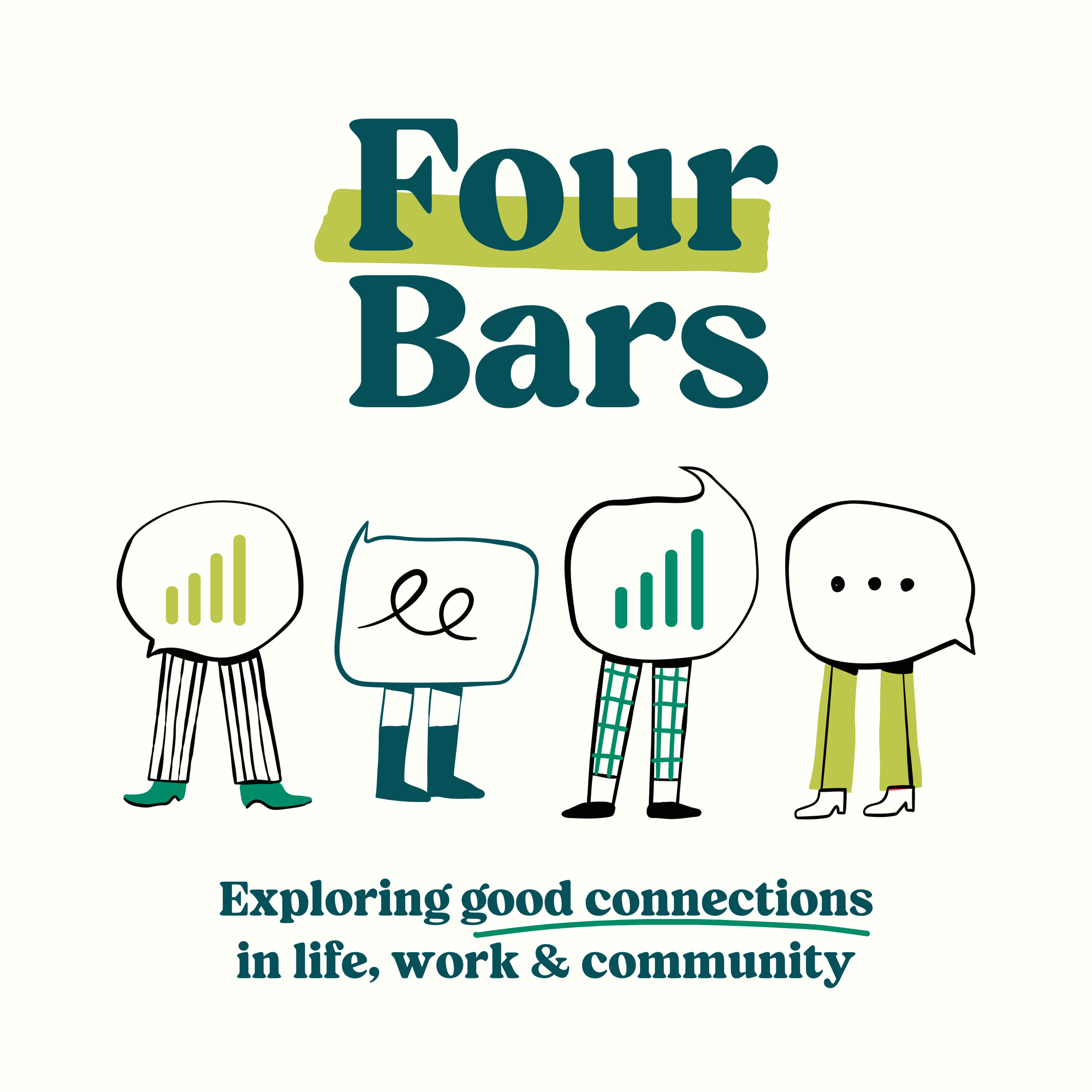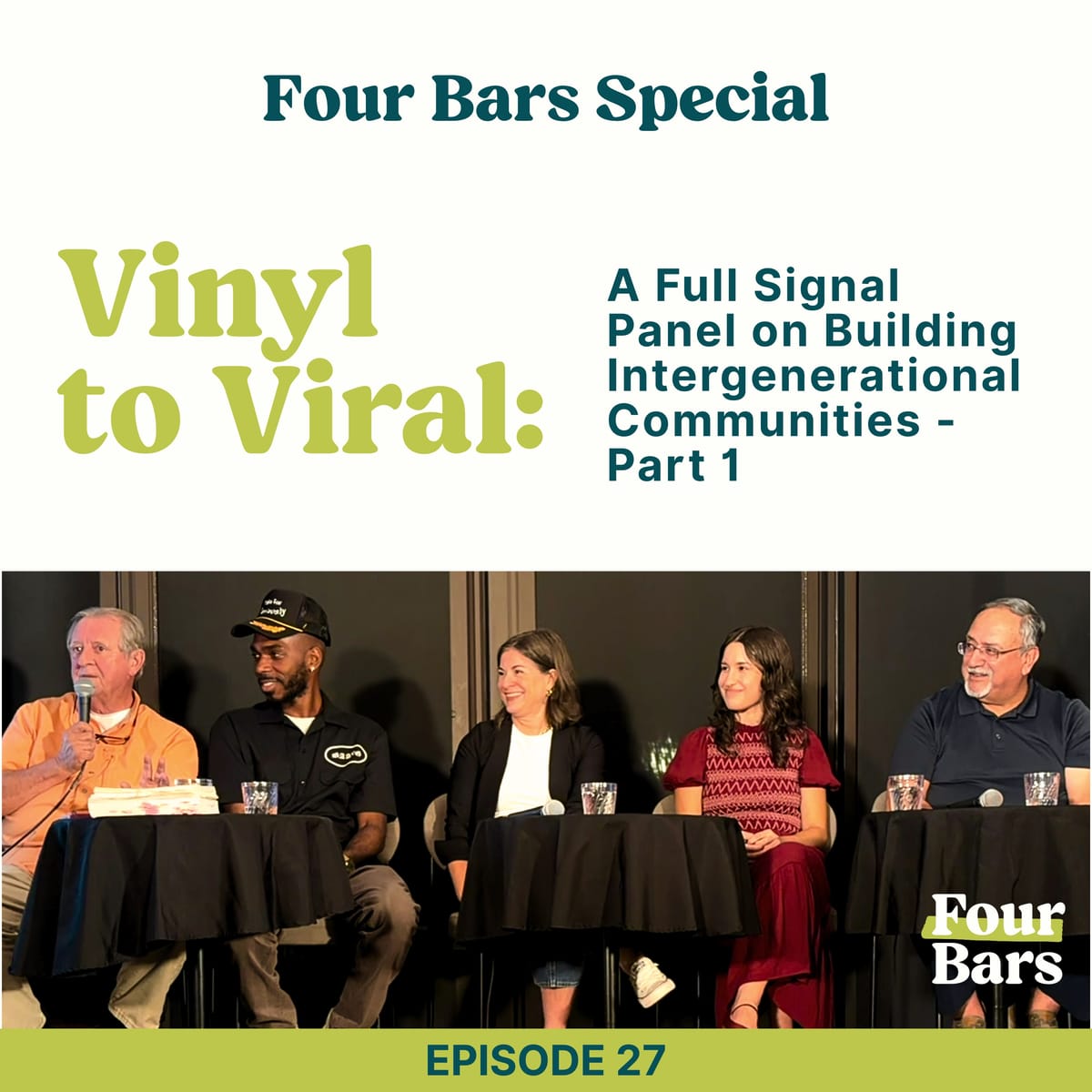What if we chased human connection with the same focus we use to hunt for a full signal on our phones? We put that question to the test by bringing five generations: Gen Z, Millennial, Gen X, Boomer, and Traditionalist, onto one stage and asking them to trade real stories. The result is a warm, funny, and eye-opening journey across life stages, tech shifts, and civic pride that shows how much we share and how our differences can actually power stronger communities.
We kick off with simple ground rules that protect curiosity and make honest conversation feel safe. From there, each guest steps up with a story that spotlights their lane: Gen Z’s love for listening and contradiction without conflict; Millennial creativity and community-building through music, events, and content; Gen X’s knack for balancing meme-age humor with operational reality at work; Boomer commitment to service and relationships that last decades; and a Traditionalist’s living archive of a city’s growth, health, and everyday wonder. Along the way, we ask what truly drives generational gaps: history, technology, or just where we are in life, and how to build bridges that hold.
You’ll hear practical takeaways you can use right away: set the room with clear norms, invite multiple ages to co-own projects, turn stories and songs into shared context, translate across tech comfort with patience, and celebrate small wins that build trust. The conversation keeps a steady pulse on community development, workplace collaboration, and inclusive leadership, offering a grounded playbook for anyone who wants better teams, richer neighborhoods, and more resilient local networks.
If the idea of stronger, kinder, more connected communities resonates with you, tap play now. Then subscribe, share this episode with someone from a different generation, and leave a review with one bridge you plan to build this week.
Follow and stay connected:
Website: fourbarspodcast.com
YouTube: youtube.com/@FourBarsPodcast
Instagram: @edges_Inc
Facebook: EDGES Inc.
LinkedIn: EDGES Inc.
Never miss an update—follow, subscribe, and join the conversation!
More About this Episode
Why Intergenerational Communities Matter More Than Ever
In an age where connection is often reduced to the number of bars on a phone, the Four Bars Podcast offers a powerful reminder: what if people pursued human relationships with the same intensity as they chase a strong signal? This idea, central to the podcast hosted by Ken and Patti Leith, came to life in a recent Full Signal panel exploring the importance of intergenerational communities.
Gathering five individuals from five different generations, from Gen Z to the Traditionalist generation, the conversation dove into the heart of what makes multigenerational connection so valuable. Through stories, perspectives, and shared experiences, the panel demonstrated that when people intentionally reach across age lines, communities become stronger, more inclusive, and more resilient.
The Foundation of Intergenerational Connection
Intergenerational communities are more than just a collection of people from different age groups living side by side. At their best, they foster mutual respect, curiosity, and collaboration. They provide space for individuals to learn from each other’s experiences while recognizing the unique perspectives shaped by generational identity.
Too often, generational differences are reduced to clichés: the “lazy Millennial,” the “out-of-touch Boomer,” and the “screen-addicted Gen Z.” However, these labels miss the complexity of real people, shaped by unique life events, technological shifts, and social changes. As the Leiths have observed through their growth advisory firm, Edges Inc., true understanding comes only when people are invited into intentional, open conversations.
Different Perspectives, Shared Humanity
The panel featured voices from across the generational spectrum. Gen Z was represented by Malia Camacho, whose thoughtful presence in previous Full Signal events made her a natural choice. She emphasized the power of connection she’s witnessed during these conversations. “Every time I’ve been in the room, I see really cool connections, even when people contradict each other,” she noted. “That’s part of the beauty of it.”
Millennial panelist Jeremiah Pickett, also known by his artist name, Baang, brought a dynamic energy. His work in entertainment, video production, and community-building made him a compelling voice for younger professionals navigating today’s complex social landscape. “When Ken and Patti ask you to do something, you say yes,” he joked. But beneath the humor was a truth: intentional community-building happens when people show up.
From Generation X, Lela Davidson brought insight shaped by both her professional experience as COO of Crystal Bridges Museum and her personal reflections. She spoke about the distinction between life stage and life experience, a key theme that emerged throughout the discussion. “There are generational differences shaped by historical context,” Davidson said, “but then there’s just life stage and life experience.”
Life Stage vs. Life Experience: A Critical Distinction
The idea that generational conflict is purely about age differences doesn’t hold up under scrutiny. Often, what appears to be a generational divide is actually a reflection of different life stages.
For instance, a 25-year-old early in their career and a 60-year-old nearing retirement may differ more because of their circumstances than their generational label. Recognizing this distinction opens the door to greater empathy. It reminds people to stop making assumptions based on age and instead engage with others based on shared human experiences.
Storytelling as a Bridge Between Generations
Ray Hernandez, representing the Baby Boomer generation, shared stories from his early days in the Marine Corps and his continued work in the community. The Leiths first met Hernandez more than two decades ago, during an unexpected encounter that turned into a long-lasting friendship. His history of service and involvement in Northwest Arkansas added depth to the conversation and reminded listeners that each generation carries valuable lessons.
The Traditionalist generation was represented by a retired physician who had practiced in Bentonville for nearly five decades. His storytelling, including tales of delivering babies, building medical offices, and watching Bentonville grow, captivated the audience. Known for handing out business cards that simply say “Friend,” his presence underscored the lasting impact that older generations can have when their wisdom is embraced, not sidelined.
He summarized the heart of the conversation with a simple but powerful observation: “Just seeing people of all ages out together, we’re intergenerational already. And we get to be a part of it. That’s pretty special.”
Listening: The Most Important Skill
Throughout the panel, the value of listening emerged as a recurring theme. Generational divides often grow wider when people fail to genuinely listen. When assumptions are replaced with questions, and when answers are heard without judgment, walls begin to fall.
That’s part of the philosophy behind Full Signal, a recurring event series hosted by the Four Bars team. These aren’t lectures. They’re conversations, designed to invite authentic participation, challenge assumptions, and build trust across differences.
Before the panel began, each panelist selected a meaningful song, which played as attendees arrived. It was a small gesture, but one that set the tone for a gathering built on respect and curiosity. It gave each person in the room a sense of who the panelists were before they even spoke.
Intergenerational Understanding in the Workplace
The need for intergenerational dialogue isn’t limited to community events. It’s essential in workplaces as well. The Leiths’ firm, Edges Inc., frequently works with organizations to bridge generational gaps on teams. When younger employees feel heard by older leadership, and vice versa, innovation thrives.
This kind of collaboration encourages mentorship in both directions. Younger professionals may teach older colleagues about new technologies, while older workers offer context and wisdom that can’t be found in a YouTube tutorial.
Intergenerational inclusion in business isn't a nicety; it's a necessity. It leads to more creative problem-solving, stronger team dynamics, and better outcomes.
Building Intergenerational Communities: Where to Begin
Creating meaningful intergenerational communities doesn’t happen by accident. It requires intentional action. Here are several practical ways organizations and individuals can start:
- Design shared spaces where people from different generations collaborate, volunteer, or socialize together.
- Use storytelling to foster empathy. Stories allow people to connect through emotion and shared humanity rather than assumptions.
- Promote reverse mentorship so younger individuals can share their insights while learning from older peers.
- Challenge stereotypes and avoid generational generalizations.
- Create inclusive environments that honor diverse experiences and make room for all voices.
The Four Bars team encourages listeners to move beyond passive interaction. Simply sharing a space isn’t the same as building a community. True connection takes work, but the rewards are immeasurable.
Full Signal, Full Connection
The Four Bars Podcast isn’t just a clever name; it’s a metaphor for something deeper. As Ken and Patti Leith often ask: What if people pursued real connection as urgently as they chase a full phone signal?
This panel reaffirmed their belief that intergenerational dialogue is essential for healthy communities. When people of all ages come together, listen to one another, and engage with empathy, they create something far stronger than any digital signal: an authentic human connection.
As communities like Bentonville grow and change, the importance of building bridges across generations becomes even more critical. The conversation started on the Four Bars stage may have ended that night, but the work continues in neighborhoods, workplaces, and everyday interactions.
By embracing the richness of multigenerational connection, communities can move beyond surface-level interaction and step into something far more powerful: full signal living.



Member discussion: